U.S. CUSTOMERS: Tariffs are included in the product prices until the situation changes. Click here for more info.
U.S. CUSTOMERS: Tariffs are included in the product prices until the situation changes. Click here for more info.

How to make an oil extract of Frankincense-2 methods
by Dan Riegler January 17, 2024 7 min read 4 Comments
How to extract the healing properties of Frankincense and Myrrh
There is a lot of interest in the healing compounds found in the different types of Frankincense. Notably, the Boswellic acid family including AKBA which are ONLY found in Frankincense. With the right information these healing compounds can be incorporated in a broad range of cosmetic and therapeutic products in any kitchen.
Boswellic acids have been shown in laboratory studies to help address arthritis, rheumatism, cancer, ulcers, colitis, brain injuries, depression, and much more. They are easily incorporated in cremes, oils and salves to help muscles and joints and rejuvenate the skin, increase elasticity, reduce wrinkles and signs of aging. Many of these healing compounds can be absorbed through the skin and are able to cross the blood-brain barrier.
Royal Frankincense Balm-Made with Frankincense Extracts
Boswellic acids are NOT found in the essential oil!
Though we rely heavily on essential oils to deliver many of the therapeutic properties of plants in our medicine and cosmetics, the brunt of Frankincense’s therapeutic compounds reside in its resin portion and not its essential oil.
In fact, our misinformed and insatiable hunger for Frankincense essential oil is not only blinding us to the true "Hero" compounds in Frankincense, but it is putting some of our Frankincense species at risk and reducing their wild populations through over harvesting to supply us with essential oil.

Freshly tapped Frankincense Carterii-Somalia-A homogeneous emulsion made of Oil-soluble and water-soluble compounds.-Photo credit Mr. M N. Warsame
Oleo resins vs Oleo gum resins
Different types of tree resins/exudates require different methods of extraction. We can divide these into three types.
- OLEO RESINS such as Pine resin, Spruce or Elemi resin are composed of essential oils and resins. Hence the name oleo resins. They dissolve completely in warm carrier oils or alcohol. Pretty straightforward.
- OLEO GUM RESINS-Most of our Frankincense and Myrrh types are oleo gum resins. This means that besides resin and essential oil, they also contain water-soluble gum which prevents Frankincense from dissolving directly in warm oils. For this reason they must be powdered first to expose their constituents to the solvent.
- GUMS such as Gum Arabic, Gum Tragacanth or the exudate from the Almond or Cherry tree. Gums are completely and exclusively water-soluble and will not dissolve in oil, fat or alcohol.
Extracting the resin and its therapeutic compounds from Frankincense-Method #1
Frankincense Papyrifera Powder. Oleo-Gum-Resins, like most Frankincense types, must be powdered to expose their compounds to the solvent. One can use a mortar and pestle or an electric grinder. Each has it benefits and drawbacks.
Vegetable oils & Animal Fats-Traditional solvents
We have used vegetable oils and animal fats oils as solvents and carriers for tree resins since time immemorial.
- Any vegetable type oil or animal fat such as tallow or lard will work as a solvent for most oleoresins. This includes Olive oil, Coconut oil, nut oils such as Almond, Hazelnut and Macadamia and any of the exotics like Argan oil, Baobab oil etc.
- Choose an oil based on your needs and preferences. Some oils keep longer than others.
- Some oils don't do well with the heat of the water bath which can go up to around 90 degrees centigrade. So know your oil's limitations.
- It is always best to make small batches that will get used before rancidity hits. Within a year.
- Keeping oil extracts in containers with little to no air, helps retard oxidization and extend their life as does adding 1 gel-cap, (400 IU) of Vitamin E per cup of oil. (Or MCT oils).
The process of dissolving oleoresins in oils and fats requires no special laboratory chemicals or equipment, and can be performed in any kitchen with a simple water bath, mortar and pestle or electric coffee grinder.
Instructions for making an oleo-extract of Frankincense
- Grind the Frankincense to a fine powder. (See my post on how to grind Frankincense & Myrrh. ). Since they are oleo gum resins, the finer you grind them, the more resin will be exposed to the oil.
- Make sure your Frankincense powder is fine and dry. Spread it out and dry it if it clumps.
- Find a glass jar or mason jar that is at least 3 times larger than your mixture of resin powder and oil.
- Add 1 part powder or to 3 parts oil, by weight to the jar.
- Clamp the jar to the side of the water bath. Do not sit the jar on the bottom of the pot since it can crack from excess heat.
- You can add room temperature water to the bath before or after you situate the jar.
- Make sure the water is up to the level of the materials in your jar
- Bring the water bath to a boil while breaking up any lumps and stirring the blend.
- Let the jar sit in a simmering bath with occasional stirring for 3-4 hours. (Once your bath is simmering you can feel free to do other things and visit it periodically to stir.) Top up with small amounts of water periodically if needed. Once the water bath is hot you can top it up with small amounts of boiling water from a kettle.
- Turn off the heat and let it sit, cool and sediment.
Filter or macerate?
At this point you have captured some of the resin acids in the oil. Now, you can either filter and use the extract, OR you can let it sit in a warm place for 4-8 weeks. If you have the patience you will notice the oil is slightly thicker and more viscous after a few weeks which means there are more resin compounds in the oil and of course, more Boswellic acids. people ask me regularly if they can skip the waiting part. You can, but I wouldn't. Next, you will need to filter your oil extract.
Filtering the oleo extract
- Filter the liquid carefully through a fine metal mesh coffee filter.
- Place the filter in a funnel over a clean glass vessel or jar.
- Add the liquid extract.
- Cover your jar/vessel and set aside. Traditionally a warmish place like on top of a fridge or water heater is recommended
- Use the residue as an exfoliant, (Put it in a jar in the shower or bathroom),add it to home made soap, skincare products or return it to the earth.
- If you plan to keep your extract around for over a year, add 400 IU of Vitamin E to each 250 ml. or cup of extract. And it will keep a little longer.
Method # 2 for extracting Frankincense-Using a Resin Extract
A resin extract is the pure resin of Frankincense after it has been separated from its water-soluble gum, usually through the process of distillation. The benefit of using a preparation made with the resin extract is that all the resin acids are present in the oil. Once a resin extract is dissolved in warm oil, all that remains is a residue of detritus and bark that can be filtered out. Your oil contains all the resin acids that are present in the Frankincense.
What is a Resin Extract?
During the distillation process Frankincense tears are washed in boiling water. Their volatile essential oils evaporate and are collected. The gum portion of Frankincense dissolves in the boiling water of the still and the pure resin portion collects in the still. When the distillation is done, the hot liquid is poured out and when cooled, the hardened, pure resin is collected. This is the resin extract and this material will dissolve directly in warm oils and waxes.
I collect and process all the Frankincense resin extract from our shop distillations and list them in the shop for sale. I grind, dry and sift the resin extracts to remove all traces of water from them. Thus they are ready to use immediately in an oil extract. You can find a selection of Frankincense resin extracts in the Natural Skincare collection and in the Resin Extract collection
Make your own resin extract.
Over a decade ago, I outlined a method for separating the gum from the resin without distilling it which created a pure resin extract of Frankincense.
It was a difficult, time-consuming and very messy process that involved boiling Frankincense in a sieve that is partially immersed in boiling water. It yielded a good quality product, but at the same time, pretty much destroyed all the kitchen pots and utensils that were used in its production. I felt terrible for all the people that had to go through the challenges of that process!
It is much easier and more cost effective to purchase the post distillation resin from someone who distills Frankincense. If you are interested in preparing your own resin extract while bypassing the distillation process, let me know in the comments, and I will publish the instructions as a separate post.
How to make a Frankincense cosmetic crème
I am not an expert in cosmetics formulation, and there is an abundance of excellent information online written by people with much greater knowledge of this art than I. I suggest you find a formula with detailed instructions for making an oil/water creme that appeals to you, and replace the carrier oil portion/phase in any of these recipes with your Frankincense Oleo Extract to make a creme.
There is always an exception to the rule!
As mentioned above, most Frankincense and Myrrh resins are Oleo-gum-resins and will not dissolve directly in carrier oils. However there are exceptions to this rule. The Frankincense "Thurimels" AKA the Honey Frankincense types will dissolve directly in warm oils. These include the Thurimels, of Frankincense Rivae and Frankincense Neglecta.
Frankincense Frereana is also a pure oleo resin. Though it has therapeutic properties, it does not contain Boswellic acids.
Are there other methods to extract the Boswellic acids?
Yes. There are 2 other methods I use to harness the power of Frankincense in cosmetic and therapeutic products. Stay tuned for future tutorials.
Do tell
I am told regularly by concerned friends that I should not share secrets, methods and successful recipes online. I disagree. I believe we are at a stage in our evolution as a global society that all information needs to be shared freely and openly. The internet is our collective brain and even our collective consciousness. We all draw from it, and contribute to it one way or another. The time for hiding things, for secrets and shadows in the world is past. We need to share whatever we have. If we all shared freely and none of us hoarded any resources, there would be more than enough of everything to go around. There would be no lack in the world, no poverty, and likely no war. If we all actively sought opportunities to share what we have, the transformation would be immediate. I also believe whatever we put out there always comes back to us in whatever form we need.
So. Have fun, be responsible for your health and wellbeing, and share what you have.
And always, always keep clear notes!
Your future self will thank you.
Dan
4 Responses
Nina
January 03, 2025
hello ! Do you think I can use only tallow to extract it ? Isn't it too hard for the maceration process ? Thank you
Tiffany
December 22, 2024
Hey Dan!
I’d love more information on how to extract while bypassing the distillation process!
Also, your time and energy into all of this information is so much appreciated, thank you!
Mugambe
December 22, 2024
Thank you for sharing this knowledge with us. I like to make a double extraction of resins. I infuse in alcohol to get the alcohol soluble constituents. I then infuse in a warm oil like jojoba as the second solvent.
Leave a comment
Comments will be approved before showing up.
Also in Apothecary's Garden Blog
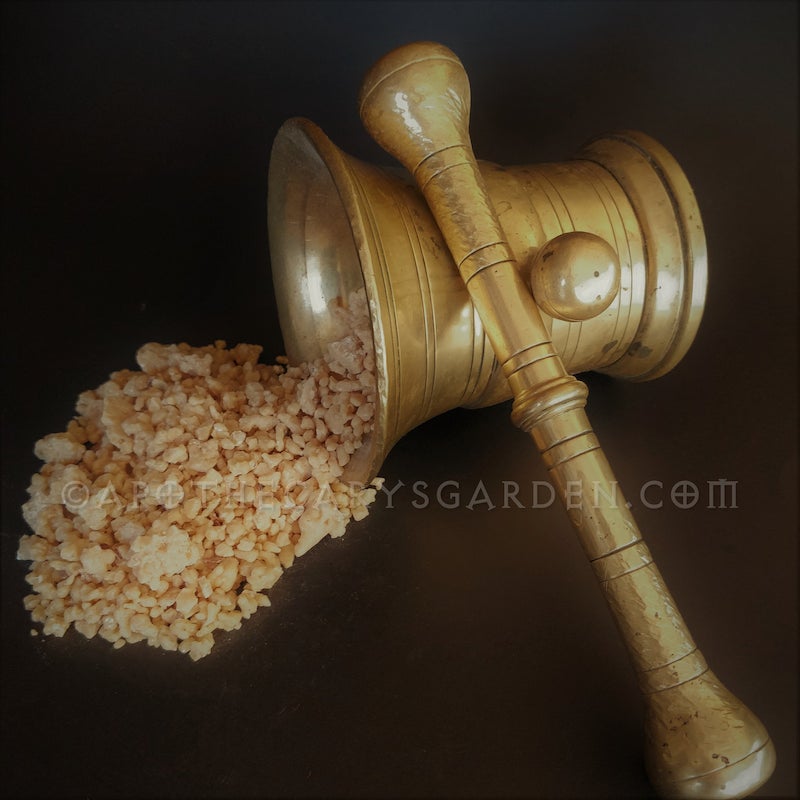
How to make a Frankincense Resin Extract with Boswellic acids
by Dan Riegler February 13, 2025 5 min read
The resin portion of Frankincense contains very valuable therapeutic compounds called Boswellic acids. You won't find them in the water-soluble gum, and you will not find them in the essential oil of Frankincense. We cannot use these resin acids to their fullest extent until we liberate the resin from the gum portion.
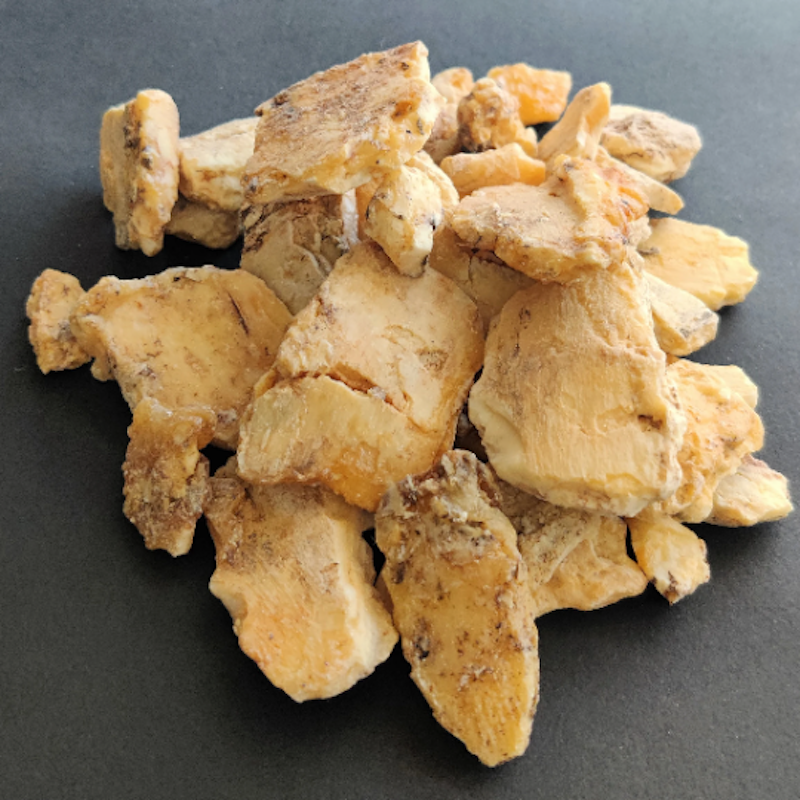
Sumatrana Benzoin-A New sustainable resin for Medicine, Incense and perfume
by Dan Riegler February 05, 2025 5 min read
Sumatrana Benzoin is harvested sustainably by farmer families in a small area of Northern Sumatra. This resin is unique in that it has floral notes other Benzoin types Lack. It has only recently been introduced to the Western market for use in perfume, medicine, incense and cosmetics.
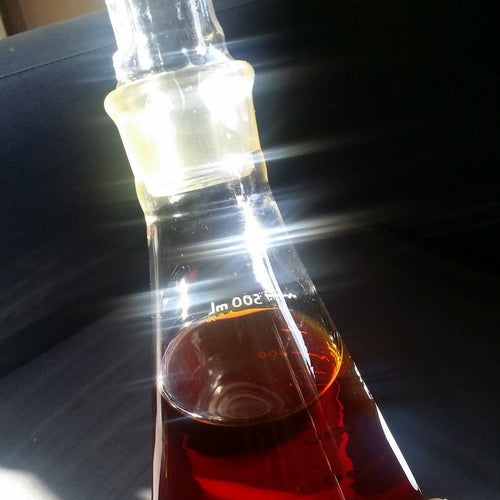
How to make a Medicinal Tincture of Frankincense
by Dan Riegler January 23, 2025 5 min read
There are several ways we can benefit from the anti-inflammatory and anti-cancer resin compounds found in Frankincense resin. A tincture is one of them and an easy product to make at home.
Recent Articles
-
How to make a Frankincense Resin Extract with Boswellic acids
February 13, 2025
-
Sumatrana Benzoin-A New sustainable resin for Medicine, Incense and perfume
February 05, 2025
-
How to make a Medicinal Tincture of Frankincense
January 23, 2025
-
Frankincense as Medicine-Truth, Myth, and Misinformation
January 15, 2025
-
Sustainable Frankincense from the Samburu women of Kenya
December 04, 2024
-
How to make a Tincture of Myrrh for oral health
November 27, 2024
-
Green Frankincense Demystified
October 04, 2024
-
How to make an oil extract of Frankincense-2 methods
January 17, 2024
-
Suhul Myrrh-A gift from the trees
January 03, 2024
-
How to prepare Winter Medicine with local Tree Resins
December 14, 2023
Categories
- Akba
- Ambergris
- Animal Welfare
- Animalics
- Anti-inflammatory
- Aphrodisiacs
- Aphrodite
- Apothecary Arts
- BA
- Benzoin
- Boswellia
- Boswellia Carterii
- Boswellia Frereana
- Boswellia Neglecta
- Boswellic Acids
- Boswellis Serrata
- burn incense
- cancer
- Censer
- Chest Rub
- Commiphora
- Commiphora Myrrha
- Copal
- Cough Balm
- DIY
- DIY Frankincense extract
- Fair trade
- ferula
- Frankincense
- Frankincense Absolute
- Frankincense as medicine
- Frankincense Extract
- Frankincense Neglecta
- Frankincense Sacra
- Frankincense Tincture
- Frankincense tutorial
- Incense
- Incense burners
- Incense Making
- Incense Resins
- kenya
- Medicated oils
- Medicine chest
- Muscle Rub
- Musks
- Myrrh
- Myrrh tincture
- new
- Perfume
- Perfume Ingredients
- Perfume Making
- Perfumery
- Pine
- Pine Resin
- Resin extract
- Royal Green Hojari
- Sacred Copal
- Samburu
- Spruce Resin
- Suhul Myrrh
- Sultans Select
- Sumatrana Benzoin
- Sustainability
- Sustainable Frankincense
- Sustainable Harvest
- tincture
- Traditional Medicine
- Tree Medicine
- Tree Resins
- Tutorials
- Wildcrafting
- Wood finishes
Where are you Blog posts Dan?
Please bear with me as I rewrite, update and link my old Blog posts to the new shop. If you don't see the tutorial or post you are looking for, pop in periodically. I should have them all up, updated and running in the next few weeks.
Subscribe
Sign up to get the latest on sales, new releases and more …
- Comments
- DISQUS
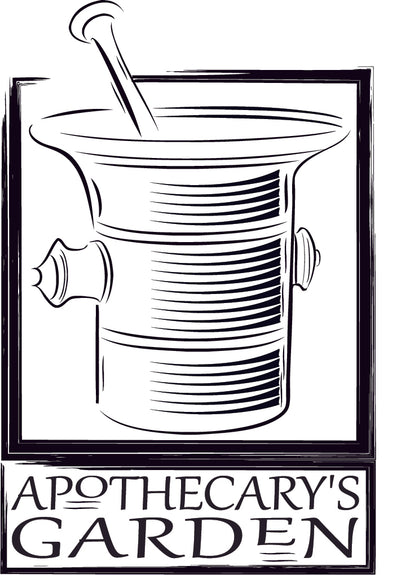
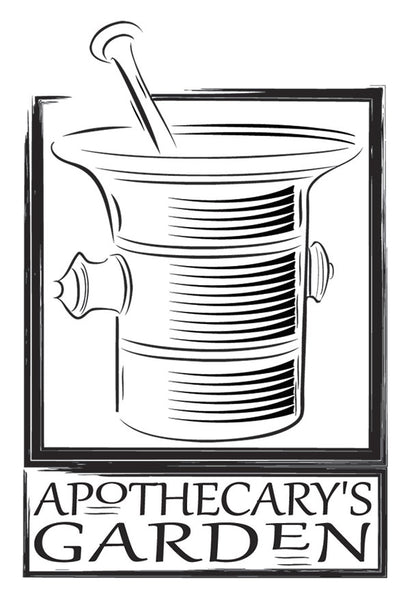




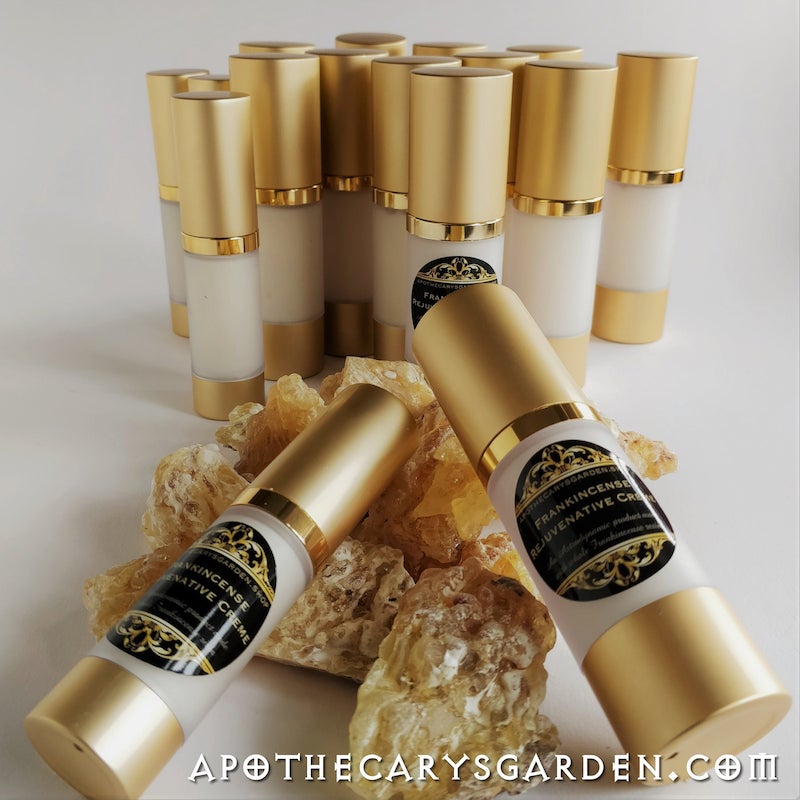
Shahar
February 12, 2025
Dear Dan,
Thank you so much for the information. It is so helpful.
It would be appreciated if you could share the information on preparing my resin extract while bypassing the distillation process.
Thanks :-), Shahar